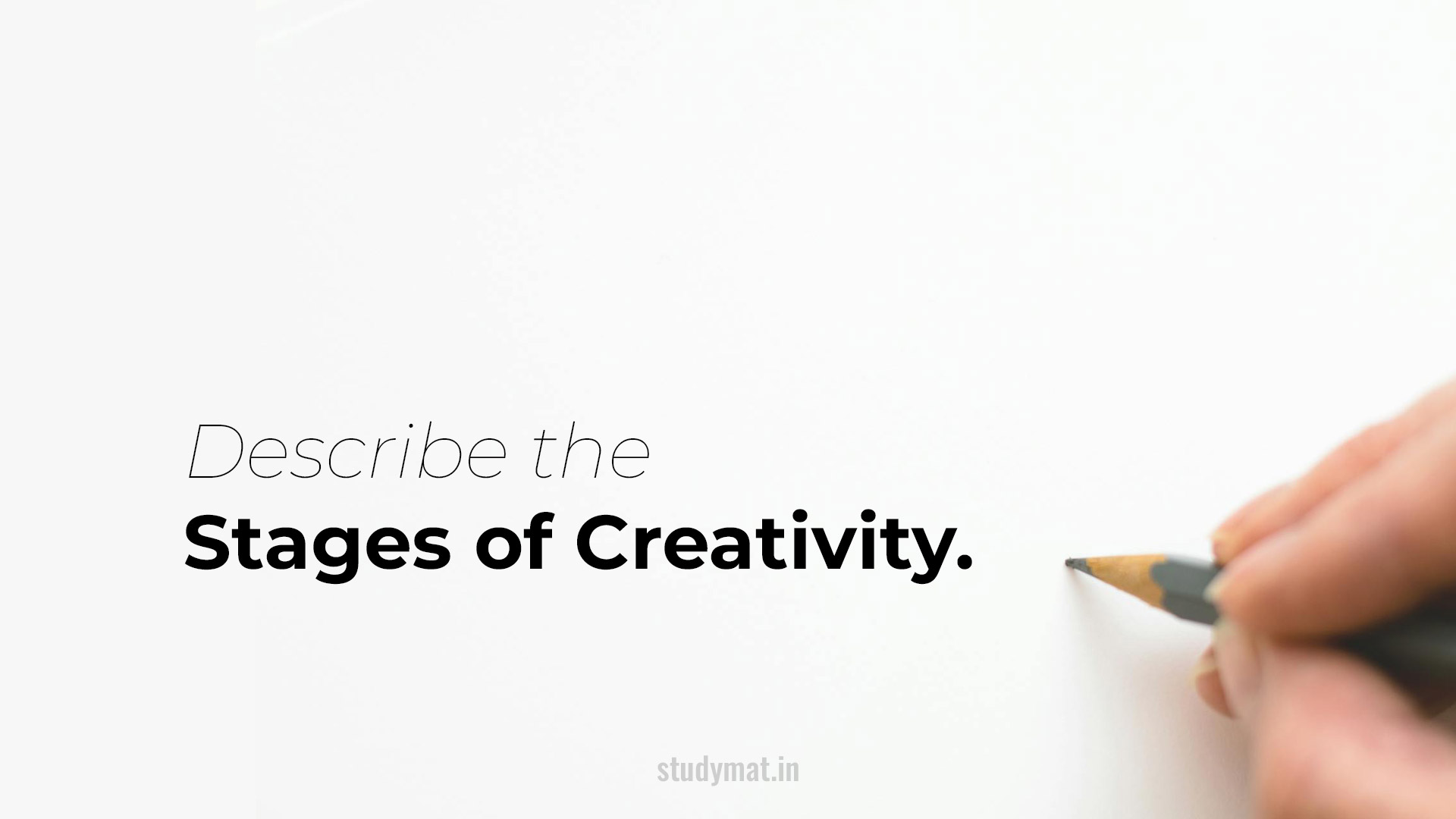In this article, we will Define Creativity. Describe the Stages of Creativity.
What are the Stages of Creativity?
The Stages of Creativity were initially proposed by Graham Wallas (1926), consisting of four successive steps:
1. Preparation Stage:
The individual gathers information about the problem and attempts solutions through trial and error. They recall personal experiences and investigate various directions related to the problem without concern for redundancy or relationships.
2. Incubation Stage:
The solution exists but is unclear, so the individual does not consciously work on the problem. Instead, they allow it to reside in the unconscious and reflect on the focus question, potentially leading to modifications.
3. Illumination Stage:
Insight suddenly occurs, leading to the emergence of a new solution, idea, or relationship. The individual actively reformulates or generates new ideas, requiring more conscious effort.
4. Verification Stage:
The individual tests and checks the solution, possibly making modifications based on previous stages. They may adjust their conceptual map to represent their understanding of interrelationships and connections.
These stages may not always occur in a fixed order and may even combine into fewer stages. Additionally, they may not occur regularly, as individuals with sufficient knowledge of the problem area may skip certain stages and proceed directly to others.
FAQ:
- What are the 4 Stages of Creativity?
- Who Created the 4 Stages of Creativity?
- Discuss the Stages of Creativity in Psychology.
Follow Us:
If you like this article, you can Follow us on Facebook.
Also, you can Join our Official Facebook Group for QnA Sessions and Discussions with the worldwide IGNOU community.



